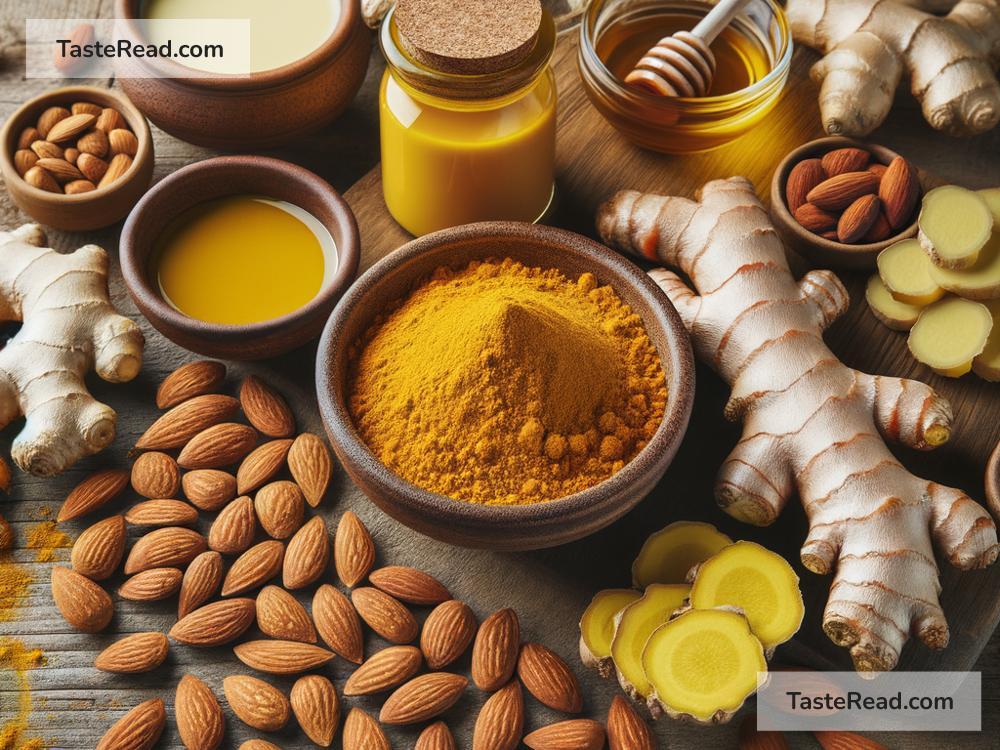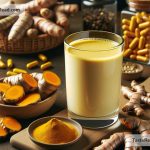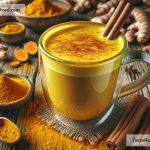Why Turmeric is More Than Just a Spice – It’s a Healing Ingredient
When you think of turmeric, what comes to mind? For many, it’s the vibrant yellow color it adds to curry dishes or maybe a trendy latte dubbed “golden milk.” However, turmeric is far more than just a spice that can jazz up your meals. Behind its bright hue lies a world of healing benefits that have been recognized for thousands of years, especially in Ayurvedic medicine. Let’s explore why turmeric is more than just a culinary delight – it’s a powerful healing ingredient.
First, what is turmeric? It’s a root, similar in appearance to ginger, native to Southeast Asia. When ground into a powder, it becomes the golden spice we’re familiar with. The magic of turmeric lies in a compound called curcumin, which is responsible for its health benefits (and its vibrant color). However, it’s important to note that the curcumin content in turmeric is relatively low, and your body doesn’t absorb it well on its own. This is where black pepper comes into play. Combining turmeric with black pepper, which contains piperine, significantly boosts your body’s absorption of curcumin.
Now, let’s dive into the reasons turmeric is celebrated not just in the kitchen but in holistic health circles around the world.
1. Natural Anti-Inflammatory Properties
One of the most well-known benefits of turmeric is its ability to fight inflammation. Chronic inflammation is believed to be a root cause of many illnesses, including heart disease, cancer, metabolic syndrome, Alzheimer’s disease, and various degenerative conditions. Curcumin, with its potent anti-inflammatory capabilities, matches the effectiveness of some anti-inflammatory drugs, without the side effects.
2. Potential to Ward Off Heart Disease
Heart disease is the world’s number one killer, and turmeric may help reverse many steps in the heart disease process. The main benefit of turmeric for heart health is improving the function of the endothelium, which is the lining of your blood vessels. Endothelial dysfunction is a major driver of heart disease, involving an inability of your endothelium to regulate blood pressure, blood clotting, and various other factors. Curcumin has been shown to improve endothelial function and reduce inflammation and oxidation, which are also important in heart disease.
3. Aids in Preventing (and possibly treating) Cancer
Cancer is characterized by uncontrolled cell growth, and curcumin has been studied as a beneficial herb in cancer treatment because it affects cancer growth and development at the molecular level. Research has shown that it can reduce the spread of cancer and contribute to the death of cancerous cells.
4. Supports Brain Health and Function
Curcumin can cross the blood-brain barrier and has been shown to lead to various improvements in the pathological process of Alzheimer’s Disease. It reduces inflammation and oxidation in the brain, which are linked to neurodegenerative conditions. Furthermore, it boosts levels of the brain hormone BDNF, which increases the growth of new neurons and fights various degenerative processes in the brain, potentially improving memory and intelligence.
5. A Natural Pain Reliever
Due to its anti-inflammatory properties, turmeric is also considered a natural pain reliever. It’s been used to treat pain related to arthritis and other conditions. For some, it works as well as over-the-counter pain medications for reducing pain and improving function in people with knee osteoarthritis.
6. Improves Skin Health
Thanks to its anti-inflammatory, antimicrobial, and antioxidant properties, turmeric can contribute to healthy skin. It can help with acne, eczema, photoaging, and psoriasis. Applying turmeric topically or ingesting it can reduce symptoms and improve skin appearance.
How to Include Turmeric in Your Life
Adding turmeric to your diet doesn’t have to be complicated. It can be as simple as sprinkling it into soups, stews, or on roasted vegetables. You can also make golden milk, a warm, soothing drink made with turmeric, milk (dairy or plant-based), black pepper, and other warming spices like cinnamon. Remember, pairing it with black pepper enhances curcumin absorption.
In conclusion, turmeric is much more than a spice; it’s a healing ingredient with a vast array of health benefits. Whether you’re using it to add flavor to your meals or as a natural remedy, it’s clear that this vibrant spice holds a special place not just in the kitchen, but in the world of natural health. So, the next time you see that bottle of turmeric on your spice rack, remember, it’s not just there to color your curry – it’s there to enhance your well-being, one sprinkle at a time.


